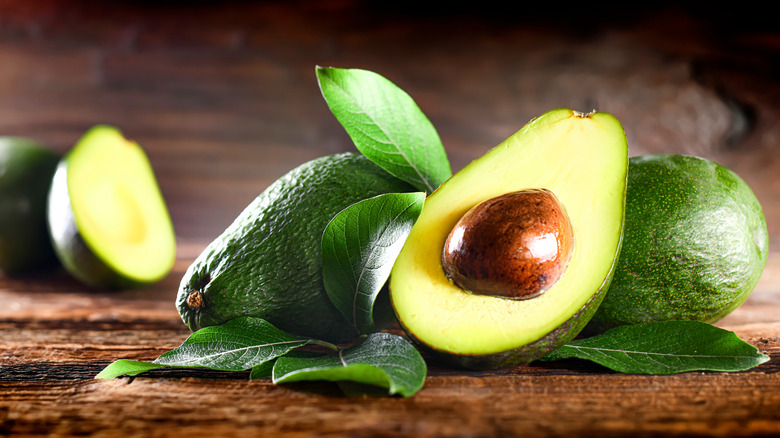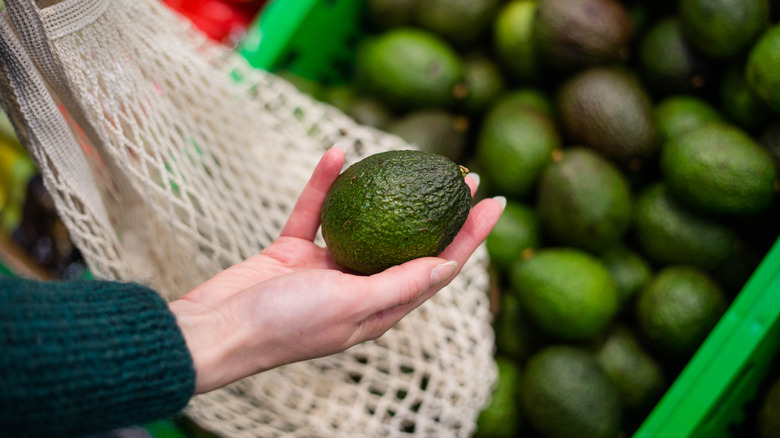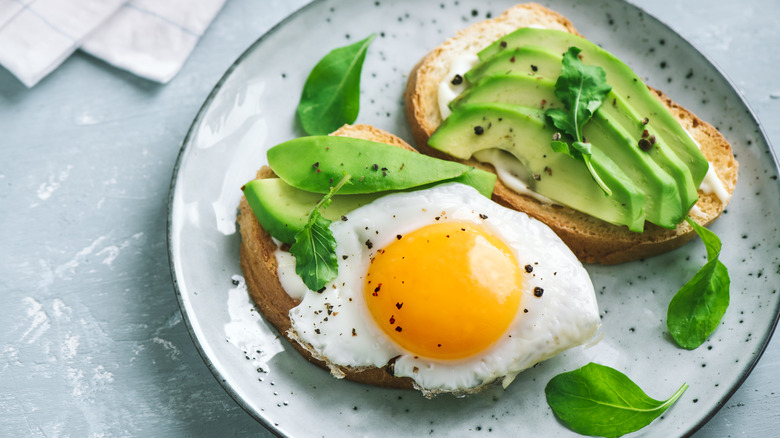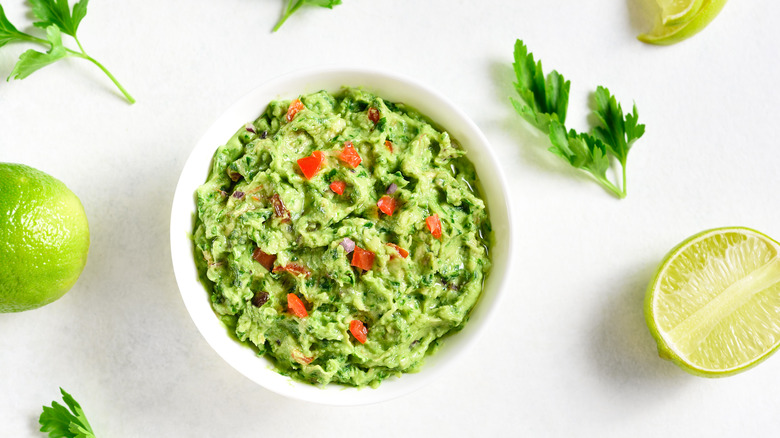Florida Avocados Vs Hass Avocados: What's The Difference?
In recent years, avocado recipes have become more popular than ever. Whether they're added to a salad or spread onto photogenic toast, avocados add a pop of color — and plenty of creamy flavor — to any dish. However, it's not always easy to find that perfect avocado. There are different variations of the fruit, and each has a short window of time when it's perfectly ripe before that mushy mess starts to set in. (The Kitchn suggests checking the color under the stem: Green means good, and brown means past its prime.)
It's also, of course, important to know the different types of avocados before making your selection. If you have ever spent time in the produce section of the grocery store, you've likely come across these two different types of avocados: Florida and Hass. The two fruits are in the same family, but they each have different characteristics, including their appearance, nutritional value, and the ways in which they are best used.
Florida and Hass avocados look different
Fortunately for shoppers in a hurry, Florida and Hass avocados can usually be found next to each other in the produce section, making their differences in appearance immediately visible. The former variety of the fruit is most commonly bright green when ripe, according to Edible South Florida. Florida avocados are also larger and smoother-skinned than their Hass counterpart, WLRN says.
Hass avocados, on the other hand, don't have the same aesthetically appealing green skins. They're often either dark green or brown, and they are rougher and more wrinkly in texture. As Avocados From Mexico explains, a Hass' skin will continue to darken as it ripens, turning almost black the older it gets. Finally, you'll notice yet more differences when you cut into each of these fruits: Florida avocados have teardrop-shaped pits, while Hass avocados have spherical ones, Greatist reports. If you're familiar with the Hass variety but haven't yet spotted a Florida avocado in your local store, don't be surprised — Hass avocados make up 95% of all avocados consumed in the United States.
Florida and Hass avocados have different flavors and nutritional values
At first glance, the most obvious difference between these two fruits is their appearance. But according to Avoseedo, the fruits also have different nutritional values that ultimately contribute to their texture and flavor. Florida avocados, for one, have less fat; one cup of the fruit has 23 grams of fat compared to a Hass avocado's 35 grams. Both varieties are a rich source of monounsaturated and polyunsaturated fats, also known as "healthy fats," which means it's not a bad idea to eat an avocado every day. When taking calories into account, the Florida fruit is the less caloric option, with 276 calories per cup compared to Hass' 384.
Those nutritional differences play into the mouthfeel of each of these avocados. The higher fat content in a Hass avocado makes it creamier and more buttery, while the Florida variation is more solid and, to some people, watery. For that reason, each avocado shines in different recipes, and the type you choose to use in your cooking can make all the difference.
Florida and Hass avocados are used differently in recipes
When deciding which avocado to use in a recipe, it is important to consider the fruits' textures and flavors. A Florida avocado is firmer, making it easier to slice and more likely to hold its shape, says Greatist. This can be ideal for anyone looking to neatly cut avocados into cubes or slices, as you might do for an avocado tomato salad. Alternatively, since Hass avocados are fattier, they have that signature silky texture, making them perfect for spreading onto avocado toast or smashing into guacamole.
Ultimately, these fruits' varying tastes and textures give different culinary purposes to each. Florida avocados may be preferable to those looking to cut calories, but they don't come with the same satisfying richness that Hass avocados have. If you want to prepare a dish in which avocado is the star ingredient, it's better to stick with the more popular Hass.



